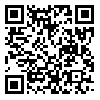Volume 12, Issue 4 (2-2020)
ijhe 2020, 12(4): 607-620 |
Back to browse issues page
Download citation:
BibTeX | RIS | EndNote | Medlars | ProCite | Reference Manager | RefWorks
Send citation to:



BibTeX | RIS | EndNote | Medlars | ProCite | Reference Manager | RefWorks
Send citation to:
Zazouli M, Karimi Z, Rafiee R. Selecting the best options of management of municipal solid waste using life cycle assessment methodology (Case study: Noor city). ijhe 2020; 12 (4) :607-620
URL: http://ijhe.tums.ac.ir/article-1-6194-en.html
URL: http://ijhe.tums.ac.ir/article-1-6194-en.html
1- Department of Environmental Health Engineering, School of Health, Mazandaran University of Medical Sciences, Sari, Iran AND Health Sciences Research Center, Mazandaran University of Medical Sciences, Sari, Iran
2- Department of Environmental Health Engineering, School of Health, Mazandaran University of Medical Sciences, Sari, Iran ,z_karimi9069@yahoo.com
3- Department of Environmental Sciences, Faculty of Natural Resources, University of Tehran, Karaj, Iran
2- Department of Environmental Health Engineering, School of Health, Mazandaran University of Medical Sciences, Sari, Iran ,
3- Department of Environmental Sciences, Faculty of Natural Resources, University of Tehran, Karaj, Iran
Abstract: (3233 Views)
Background and Objective: one of the major challenges in urban management in human societies is related to the collection, recycling and disposal of solid waste and sewage. Poor waste management causes pollution of water, soil and air. It will have a major impact on public health. The aim of present study was to investigate the current status and select the best options of management of municipal solid waste in Noor city (Mazandaran, Iran) using life cycle assessment (LCA) methodology.
Materials and Methods: This research considered with five scenarios: 1) Recycling, composting and unsanitary landfilling; 2) Recycling, composting and sanitary landfilling; 3) Recycling, incineration and sanitary landfilling; 4) Recycling, composting and anaerobic digestion, incineration, sanitary landfilling; 5) Recycling and unsanitary landfilling. The required data for life cycle assessment inventory were collected through reviewing resources, preparing of questionnaires, completing the questionnaire by staff, and field inspections.The life cycle inventory was approved by the IWM model.
Results: The scenario 5, which is the current situation in the region, had the highest environmental impact in terms of toxic emissions and ecological indicators among all the scenarios. Energy consumption in the scenarios 1 and 5 was higher than the unsanitary landfilling in comparison to the other scenarios. Accordingly, the scenarios 5 and 4 had the most and the least impact on methane gas production.
Conclusion: According to the ecological index, the fourth scenario including recycling, composting and anaerobic digestion, and sanitary landfilling was the best scenario. Fifth scenario with the highest pollution load was the worst scenario evaluated.
Materials and Methods: This research considered with five scenarios: 1) Recycling, composting and unsanitary landfilling; 2) Recycling, composting and sanitary landfilling; 3) Recycling, incineration and sanitary landfilling; 4) Recycling, composting and anaerobic digestion, incineration, sanitary landfilling; 5) Recycling and unsanitary landfilling. The required data for life cycle assessment inventory were collected through reviewing resources, preparing of questionnaires, completing the questionnaire by staff, and field inspections.The life cycle inventory was approved by the IWM model.
Results: The scenario 5, which is the current situation in the region, had the highest environmental impact in terms of toxic emissions and ecological indicators among all the scenarios. Energy consumption in the scenarios 1 and 5 was higher than the unsanitary landfilling in comparison to the other scenarios. Accordingly, the scenarios 5 and 4 had the most and the least impact on methane gas production.
Conclusion: According to the ecological index, the fourth scenario including recycling, composting and anaerobic digestion, and sanitary landfilling was the best scenario. Fifth scenario with the highest pollution load was the worst scenario evaluated.
Type of Study: Research |
Subject:
General
Received: 2019/01/19 | Accepted: 2020/02/8 | Published: 2020/05/20
Received: 2019/01/19 | Accepted: 2020/02/8 | Published: 2020/05/20
Send email to the article author
| Rights and Permissions | |
 |
This work is licensed under a Creative Commons Attribution-NonCommercial 4.0 International License. |





